How to Drive Lightning Experience Adoption
What can you do to guarantee your team members will fully accept the new Lightning version of the org that you’ve created for them? The key lies in acceptance.
Although change can be highly liberating and empowering, it can also inevitably be met with some resistance to it. Some people in your organisation will tend to feel unconfident, overwhelmed, and uneasy with the new system, and as such, will resist what’s new and cling to what they’re familiar with. It’s a natural human response. It explains why some sales teams refuse to let go of outdated workarounds and disparate spreadsheets, even though they have better tools at their fingertips.
Much like adoption, acceptance and cannot be forced. Unfortunately, there isn’t a magic wand to make everyone instantaneously love your Salesforce org’s new Lightning implementation. What you can do, though, is to actively promote a culture that is accepting of change by encouraging a shift in attitude and behavior, and by fostering a collaborative and supportive work environment.
Here are our top tips to help ensure Lightning Experience adoption in your company, which were derived from several years of experience in the digital transformation space and Salesforce CRM industry.
1. Create compelling reasons to use the new Lightning Experience implementation.
Help your users understand and demonstrate how utilising the new CRM implementation will make their lives easier by enabling them to work more efficiently rather than sticking to the old non-Lightning process. You can accomplish this by:
- Customising your Lightning implementation, user features, and functionality to streamline standard business processes
- When necessary, look to AppExchange to use solutions and apps to cater to your users’ needs and feature requests
- Roll out an implementation designed and configured to satisfy both your users and upper management in your organisation
- Encourage the use of internal communication channels such as Quip or the native Chatter app to help team members work more effectively together to close sales faster
2. Monitor, and support your users throughout the Lightning adoption process.
Set up reporting to segment your organisation’s users into 4 distinct user segments that are ordered by their levels of adoption. Then provide user support for every segment proactively, utilising key metrics to keep track of your users’ adoption levels.
- Proficient and cooperative. This segment is comprised of team members that are highly proficient in the use of your Salesforce org or power users who learn new technologies quickly
- Not proficient, but open-minded and trainable. These team members are eager to learn how to use the new Lighting version, but they’re a bit slower than others at getting into the swing of things. They’re cooperative, but aren’t able to use the full power of your system just yet. Address their concerns, provide training and support, resolving any UI or UX issues which come up along the way. This will help them to start utilising the full potential of your implementation as soon as possible
- Not willing, but trainable. This is an important segment that urgently needs to be addressed, particularly from the viewpoint of senior managers. To win their buy-in, emphasise user success anecdotes, present your current and ideal metrics concerning user adoption, succinctly demonstrate the long-term benefits and goals of the new Lighting system, and demonstrate how much more difficult and inefficient it would be for them to work without the new Lighting implementation
- Not willing, and with learning difficulties. This segment may well be beyond the scope of your responsibilities (and expertise, for that matter). Your job here is simply to identify which users fall within this segment, and coordinate with senior management to help resolve these users’ adoption issues
3. Provide ongoing user support and education by publishing organisation-wide bite-sized videos and user guides to outline new processes, new feature sets, and capabilities.
Aside from providing your new Lighting users with in-office training, publish an online repository or knowledge base. Upload engaging user videos from time to time, to encourage your team members to get acquainted with the new implementation and master how to do their daily tasks with a newfound ease and convenience. You can roll this out with:
- One or more screen recording software or elearning apps to create instructional videos that are, at most, 5 minutes in length. Utilise these videos to guide users with easy, step-by-step procedures and to demonstrate the power of new feature sets
- As for your production standards, you can take a hint from the Salesforce YouTube channel, the SFDC.Guide, and Intellipaat. The important thing is that you impart engaging and useful info to your users in a manner they can fully grasp
- Monitor the user statistics concerning how often your videos are watched, which ones have gained popularity, and cater to your users’ content needs accordingly
- Provide user surveys, feedback tools, and short quizzes to test your team members’ knowledge. Do more of what works and revise content that is difficult to understand
By crafting a harmonious company environment which actively leads the way, provides full change management support, and takes the time to factor in your organisation’s unique user stories, the resulting environment will be one in which any form of resistance will not be able to take hold. By taking resistance out of the equation, you leave just one likely corollary — full user adoption and long-term organisational success.

